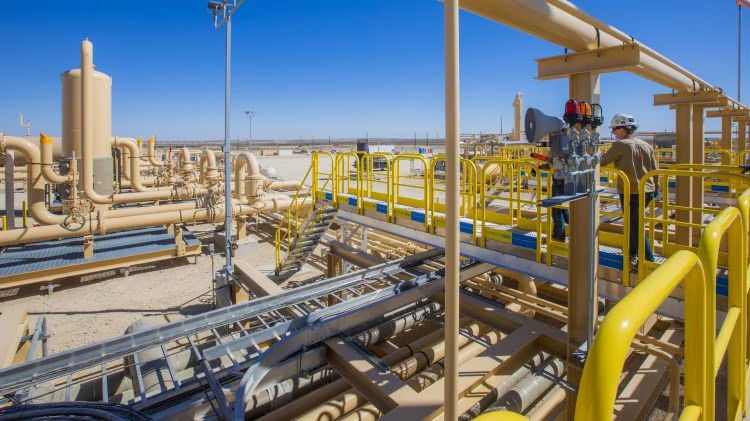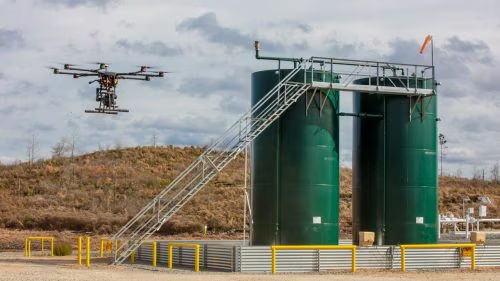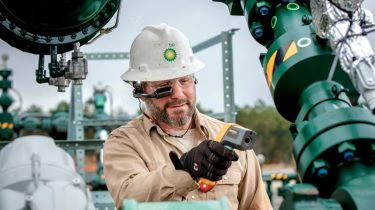
bpx energy
Denver, Colorado, United States
bpx energy
!
bp’s US onshore oil and gas business.
About bpx energy
bpx energy operates in the Permian and Eagle Ford basins in Texas as well as the Haynesville basin which stretches across Texas and Louisiana. The business focuses on safely producing high-margin barrels while lowering emissions.
Description of Services
Explore our bpx energy operations across the US:
Colorado
In September 2018, bpx energy formally opened its 160,000-square-foot headquarters in Denver. From there, bpx manages world-class assets in the Permian and Eagle Ford basins in Texas, and Haynesville Basin in Texas and Louisiana. bp supports more than 1,900 jobs throughout the state and has spent more than $1.5 million within local communities in support of education, the environment and Denver homeless shelters since 2019.
Louisiana
After completing a $10.5 billion acquisition of BHP’s shale assets, bpx energy took over operations in early 2019 of vast new premium positions in Texas and Louisiana. The deal represents bp’s largest purchase since buying ARCO in 1999. In Louisiana, bpx energy has production in the Haynesville Basin.
Texas
bpx energy operates in Texas’s Permian, Haynesville and Eagle Ford basins. In the Permian, bpx’s three central processing facilities – Grand Slam, Bingo and Checkmate – help the business decarbonize its existing production, centralizing delivery of oil and gas to reduce emissions at the source.
In 2023, bpx achieved its goal of electrifying 95% of its wells in the Permian to reduce operational emissions. Compared to gas-driven power generators, electrification is a cleaner, more reliable and cost-effective way to distribute power across an oilfield.


What we do
High-margin barrels produced responsibly
bpx energy has delivered some of the most productive and highest-value oil and gas wells in America. It achieved its target of boosting production by 30-40%, from 2022 levels, one year ahead of schedule.
A snapshot of bp’s US investment
- >650,000 barrels of oil equivalent per day expected by 2030
- ~$2.5bn average annual capital expenditure from 2024 to 2030
- Achieved its 30-40% growth production target one year early

Life at bpx energy
bp's US onshore oil and gas business, bpx energy, has delivered some of the most productive and highest value oil and gas wells in the US onshore sector.
The business has modernized its operations to run more efficiently, and is now a top oil and gas exploration and production company. It has also become core to bp’s delivery, and is expected to be a key source of growth through this decade, and beyond.
What does it look like when you embed a company that can move, learn and function like an independent – but inside the balance sheet of a global energy company, at scale? You get a top tier exploration and production company.
Nowhere is the success of this model more apparent than in the Permian Basin, America’s largest oil-producing field.
1. It started with a commitment to infrastructure
After bp acquired its Permian assets in 2018, bpx began looking for ways to enhance production while lowering emissions and flaring.
“We recognized early on when we acquired the assets that flaring so much of our gross gas stream was just not going to be acceptable,” says Kyle Koontz, bpx’s CEO. “So, we quickly started thinking about how to capture and sell that gas. We needed a facility strategy that could process all the resource.”
bpx soon developed a highly sophisticated oil, gas and water separation system to act as a “hub-and-spoke" for future well delivery, which involves building highly automated facilities to gather and process hydrocarbons, and then developing wells around those hubs to fill them. Each of those centralized facilities is also connected to pipelines to market the company’s resources.
bpx launched Grand Slam, its first centralized Permian processing facility, in 2020 and brought a similar one named Bingo online in 2023, followed by Checkmate in 2024. Those three facilities combined have a throughput capacity of more than 100,000 barrels gross of oil and associated gas per day, and the business is expected to open a fourth in 2025.
The centralized processing facilities can help recover an additional 5 to 10 percent of gas from product streams.
Leveraging this infrastructure, bpx has dramatically reduced flaring from its operations. The business now flares less than 0.5 percent of the gas from its wells, down from 15 percent during the fourth quarter of 2019.
2. Utilizing technology to improve efficiency
bpx is improving its drilling program, leveraging the latest technology, and driving innovation wherever possible. The company uses proprietary automation software from its oilfield-service providers to deliver faster drilling and reduce wear on equipment, helping the business reduce cycling times and drive further efficiencies in its Permian operations.
The technology allows rigs to adapt to subsurface conditions in real time without manual intervention, increasing the rate of rock penetration and helping prevent excessive vibrations, bit wear and other common drilling problems.
The business also uses a bpx-developed, physics-based analytics approach referred to as RTAN, or rate transient analysis. RTAN helps determine the optimal amount of hydraulic fracturing fluid and solids to inject into a well to maximize production and value.
bpx’s goal is to get the most volume per dollar spent on completions, which accounts for a disproportionate amount of a well’s cost, making this critical to capital efficiency. The business estimates RTAN has already contributed over $1.5 billion of value creation since 2020.
3. Electrification
One of the ways bpx is increasing its Permian Basin production with fewer operational emissions is by building substations and distribution lines with capacity to serve over 200 megawatts of demand from its operations. With this electrical infrastructure in place, bpx electrified 95% of its Permian wells at the end of 2023.
bpx now uses electricity to power many of its operations in the Permian, including drilling, pumping, compressing gas for recovery and running air compressors that operate controls – all activities that traditionally involved diesel or natural gas-fired power.
The business is also using electric well-completions equipment to reduce operational costs and emissions. Compared to using traditional diesel-powered equipment, these electric fleets can achieve 8% greater efficiency, as measured by pumping hours per day, and about 15% lower emissions.
Additionally, removing combustion engines in compressors and generators at well sites has helped bpx reduce its Permian methane intensity by more than 3% since 2019. The business now consistently achieves below 1% methane intensity – one of the lowest among peers in the region.
Electricity is also currently less expensive than running equipment on diesel generators, and it can increase reliability and uptime.


















